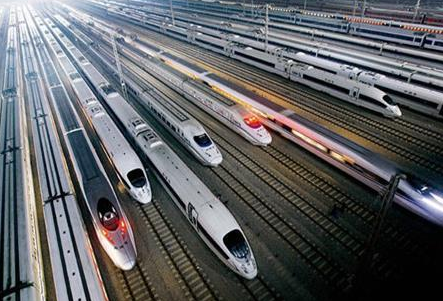Differentiation of global manufacturing recovery trend

Since the beginning of this year, the global manufacturing industry has recovered, which has had a positive impact on boosting expectations for global economic growth. However, under the influence of factors such as reduced growth momentum and high inflation, the recovery pace of manufacturing in different regions varies, gradually showing a trend of differentiation.
From the overall situation, the global manufacturing industry shows some signs of gradually getting rid of weak operations. The China Federation of Logistics and Purchasing released a research report in early February, stating that the Global Manufacturing Purchasing Managers Index (PMI) for January 2024 was 49.3%, an increase of 1.3 percentage points from the previous month, breaking free from the trend of operating below 49% for nine consecutive months and reaching a new high since March 2023.
Analysis has pointed out that inflation pressure in various countries is expected to ease in 2024 compared to the past few years, and expectations of interest rate cuts by European and American central banks within the year are gradually increasing. This is conducive to the recovery of global manufacturing and also contributes to a healthy recovery of economies in various countries. However, the recovery of manufacturing varies in different regions.
Emerging markets and developing economies, including China, face complex and severe situations, and their manufacturing development resilience is highlighted. According to data from the China Federation of Logistics and Purchasing, the Asian manufacturing PMI rose again to over 50% in January. Among them, China's manufacturing PMI in January increased by 0.2 percentage points compared to the previous month, and the level of economic prosperity has rebounded; Among ASEAN countries, except for the Philippines, the manufacturing PMI of other major countries has increased to varying degrees compared to the previous month; In Latin America, the manufacturing PMI in Brazil and Mexico has both shown a significant increase compared to the previous month; Although the manufacturing industry in Africa has declined, the index level has remained around 49% for two consecutive months. Many countries in the region have implemented a series of economic reforms to promote diversified development, improve economic resilience, and maintain stable economic recovery.
There were signs of accelerated recovery in the European manufacturing industry, but the growth momentum was insufficient. According to S&P global data, the manufacturing PMI in the Eurozone in January was higher than market expectations, reaching a new high in nearly 10 months, but the relevant data in February fell significantly. Moreover, as one of the engines of the Eurozone economy, Germany's manufacturing PMI has also significantly decreased after six consecutive months of recovery. Germany's heavy industry has experienced zero or negative growth for the fourth consecutive quarter, putting pressure on the entire eurozone.
An analysis suggests that although the European Central Bank still insists on not lowering interest rates for the time being, the containment of high interest rates on the Eurozone economy, especially manufacturing, is becoming increasingly evident. High interest rates continue to drive up borrowing and production costs for businesses, coupled with the Ukrainian crisis pushing up energy costs, forcing manufacturing companies to reduce investment and suppressing investment and consumption. Many manufacturing companies in Europe are forced to shut down or relocate their production lines, which in turn affects economic recovery.
On February 15th, the European Commission released a winter economic forecast report, which lowered the expected EU economic growth rate for 2024 from 1.3% to 0.9%, and the expected Eurozone economic growth rate from 1.2% to 0.8%. The German central bank has since issued a warning that due to weak external demand, cautious consumers, and domestic investment constrained by high borrowing costs, the German economy may shrink slightly in the first quarter of this year and fall into a technical recession.
Although manufacturing indicators in the United States have rebounded, there are still many people who are bearish about the outlook for the US economy. On February 22nd, S&P Global released data stating that the Markit manufacturing PMI index in the United States further rebounded in February compared to January. Analysts point out that under high interest rate conditions, economic growth in the United States remains quite challenging. According to a report released by Wells Fargo, as the US job market slows down and layoffs begin to increase, consumer spending may slow down in 2024, and the US economy is expected to cool significantly in the coming months. A survey conducted by the Public Affairs Research Center of the American Institute of Public Opinion (AP-NORC) at the end of January showed that only 35% of American adults surveyed believed that the US economic situation was good, while 65% still believed that the economic situation was poor.
It should also be noted that since the beginning of this year, European and American central banks have continued to release signals to "tap" the market and suppress expectations of rapid interest rate cuts. This reflects the concerns of European and American central banks about the potential risks of too fast interest rate cuts, especially since the core inflation data in Europe and America has shown stronger stickiness than expected, which cannot help but make them wary. However, maintaining high interest rates is not an easy task. At present, there have been frequent warnings in the banking industry in Europe and America, and the interest expenses of the US government have also been rising. The containment of high interest rates on the manufacturing industry is gradually becoming more prominent. Especially for Europe, the policy towards the United States is following suit step by step, and allowing the impact of high interest rates to continue to ferment may be the biggest risk currently facing us.
